|
|
Post by bixaorellana on Nov 4, 2012 20:42:48 GMT
I've wanted to make a thread on this for a long time, but it's more pressing now that it's "cemetery season" and because I finally made the personal-picture St Francisville thread.. Because I was there so briefly this time, I didn't penetrate very far into the cemetery, so my pics are heavy on trees, lichen, & long shots. Almost immediately upon arriving in St. Francisville, my sister & I went to the Catholic cemetery to see our family tomb. That cemetery is older than the Grace Episcopal Church one, but was abandoned for many years. It was only recovered and put back into use in relatively recent times, so has a much more modern, less romantic look to it, but an interesting history as it was actually the reason for founding a town on this bluff above the Mississippi River: The Catholic community dates back into the mid-eighteenth century. Missionaries stationed on the west bank of the Mississippi River would come to these shores to bury their dead, minister to the Tunica Indians and celebrate Mass in the market place or in private homes for the Catholics. Spanish Capuchin Fathers established a church in 1730 in the civil parish of Pointe Coupee, across the [Mississippi] River. It was St. Francis Church [which] remains today as a mission chapel. The settlement which grew around the burial grounds on the east bank of the River, established by the Capuchins, took its name from the 'old church' and was called St. Francisville. sourceThe two cemeteries are separated by a gentle swale and an ornamental fence.
Looking toward the street ~ Looking toward the back of the cemeteries. Looking toward the back of the cemeteries.
The land on both sides of the main street (Ferdinand Street, aka La. Hwy 10) drops away to deep hollows.  Spanish moss with bright green resurrection fern growing along the bough ~ Spanish moss with bright green resurrection fern growing along the bough ~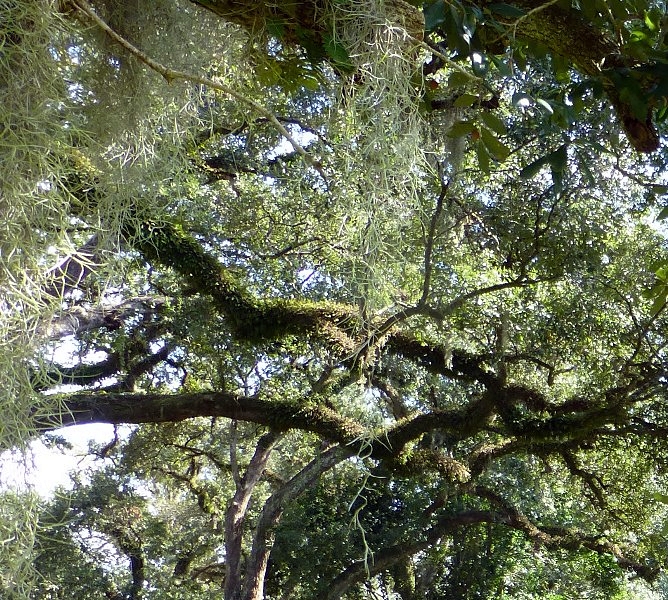 Crossing into Grace Church Cemetery ~ Crossing into Grace Church Cemetery ~ You can see the courthouse across the street and the old Masonic Hall on the far left ~ You can see the courthouse across the street and the old Masonic Hall on the far left ~ |
|
|
|
Post by bixaorellana on Nov 4, 2012 20:54:52 GMT
       Such a sad little tomb just beyond the three headstones above ~ Such a sad little tomb just beyond the three headstones above ~     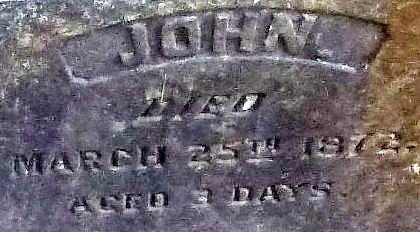 |
|
|
|
Post by bixaorellana on Nov 4, 2012 21:08:01 GMT
  Look ~~ ghost webs from ghost spiders! Look ~~ ghost webs from ghost spiders!  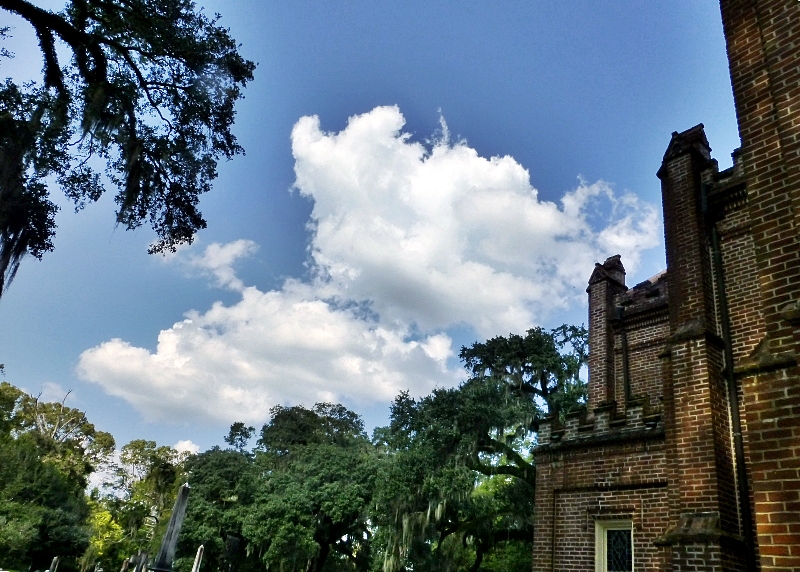    |
|
|
|
Post by bixaorellana on Nov 4, 2012 21:12:58 GMT
|
|
|
|
Post by bixaorellana on Nov 5, 2012 1:55:06 GMT
|
|
|
|
Post by htmb on Nov 5, 2012 2:00:05 GMT
Bixa, your photographs are wonderful and the cemeteries are certainly beautiful and interesting places. Oops. Looks like we posted at the same time. I love the mossy iron and have just started reading about Grace Church. I love these little historical gems!
I was raised Catholic and the second school and church I attended after my family moved to a rural part of central Florida was at the level of "mission" status for many years. I always thought it was weird that the Catholic church felt compelled to send nuns and priests to us because we were living in an undeveloped area of Forida where Catholics were definitely in the minority. The nuns, while very sweet and kind for the most part, were poorly educated and not very good teachers. I always figured our "mission" was one of the only places they could go back in the 1960's.
|
|
|
|
Post by bixaorellana on Nov 5, 2012 2:12:08 GMT
Thanks so much Htmb!
I never knew that the church maintained that mission status of US churches well into the 20th century. Perhaps it was also based on poverty in the surrounding area? It's also interesting that the nuns were under-educated, since even the elderly modern nuns are quite well educated. I met a wonderful woman in the Yucatán -- a nun in her 90s originally from NY state. When she was 18 (probably still a novice), she was told she was being sent to Panama. "Yaaay, Panama!" she said, and then: "Where's Panama?" She said she slept in the basement of a church there with water running down the walls & thought it was a great adventure.
|
|
|
|
Post by htmb on Nov 5, 2012 2:28:59 GMT
The church story about "the day the war stopped" was fascinating. I'm not at all very familiar with the Masons, and was reminded of the large Masonic monument in Alexandria. Perhaps it had ties with the Episcopal Church? I also know that Virginia Theological Seminary, in my "Interesting Structures of Washington and Virginia" thread as well, still has damage from where bullets from Union troops struck the walls. Ah, so much history to learn. It was interesting to see the red brick of Grace Episcopal. Curiously, many Episcopal churches built in North Central Florida such as Trinity Melrose, built in 1881, were wooden structures, rather than brick. |
|
|
|
Post by bixaorellana on Nov 5, 2012 6:40:02 GMT
Yes, I remember that picture of yours & how it evokes the horror of war. I don't know if there are/were ties between the Masons & the Episcopal church in general. According to this account, Lt. Cmdr. Hart happened to be both an Episcopalian & a Mason. As for the imposing brick of the church, that appears to be directly related to the wealth & social standing of the parishioners at the time it was built. |
|
|
|
Post by Deleted on Nov 5, 2012 11:56:30 GMT
I was curious as to why Grace Church was not more prominent in your St. Francisville thread Bixa, and now I know why!!
Absolutely stunning pics, so moody and evocative of the sense of history, elegance and charm of a bygone era.
The wrought iron is to die for! (No pun intended).
|
|
|
|
Post by bixaorellana on Nov 5, 2012 17:24:36 GMT
Thanks so much, Casimira! (and tee hee  ) |
|
|
|
Post by lola on Nov 6, 2012 3:22:47 GMT
Just excellent, bixa. If I can't have a white angel looking over me, I don't want anything at all. And every cemetery should have spanish moss.
Was J.P. Newsham a Yankee, then? Born in England, MO Volunteers, died in the South; how did he figure out to whom to be patriotic?
I guess maintenance on those above ground crypts (what are they called?) must be difficult. I'd be tempted to run an iron band around that splitting one.
|
|
|
|
Post by mossie on Nov 6, 2012 14:51:33 GMT
I'd just be tempted to run, if I saw that one splitting   Sorry couldn't resist, but it worried me. Too many Frankenstein films I suppose. There are some excellent statues and gravestones here, not to mention the wrought and cast ironwork. |
|
|
|
Post by Deleted on Nov 6, 2012 15:30:22 GMT
I finally just now got to see this great thread since I was away for a few days and I didn't feel that looking at such things on my netbook would do them justice, not to mention the slow internet speed of cheap economical hotels.
I am realizing that I have never visited any of the cemeteries in my own hometown region, so I don't have the slightest idea if they are atmospheric or not. I suspect not, because the cemetery where my paternal grandfather was buried is on the beachfront, and Hurricane Camille washed out part of it in 1968. In fact, it totally screwed up their casualty count, because they were picking up bodies in the area and then they realized that some of the people had already been dead for years! Anyway, I have promised to go back there some day, because I have never seen the grave of my paternal grandmother or that of my biological father either, and that just isn't right.
But I digress. Spanish moss was just made for giving atmosphere to southern cemeteries, wasn't it?
|
|
|
|
Post by tod2 on Nov 6, 2012 16:48:54 GMT
Tremendous Bixa! The creepy Spanish moss certainly added the atmosphere of that haunted feeling to the cemetery. I love old gravestones - but at the same time have no intention of ever lying beneath a tombstone ;D I found the photo-essay totally absorbing and say 'thanks so much!'
Also for the Mason's section. I have had a vague interest in all things Masonic. My interest leading me to Scotland and the fascinating Rosslyn Chapel. Among my possesions I have an old Masonic Jardiniere but have yet to find what the numbers and letters underneath the base mean.
|
|









































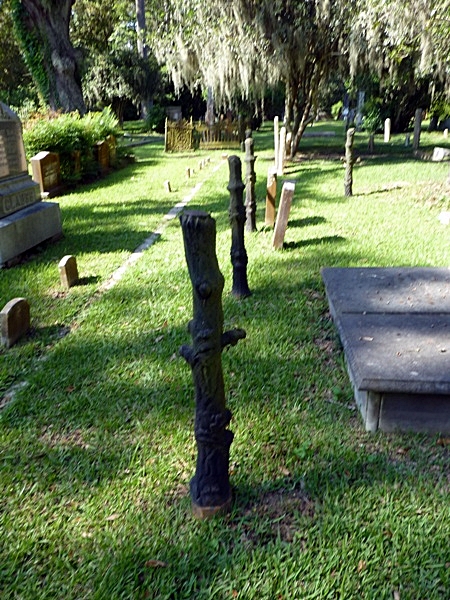

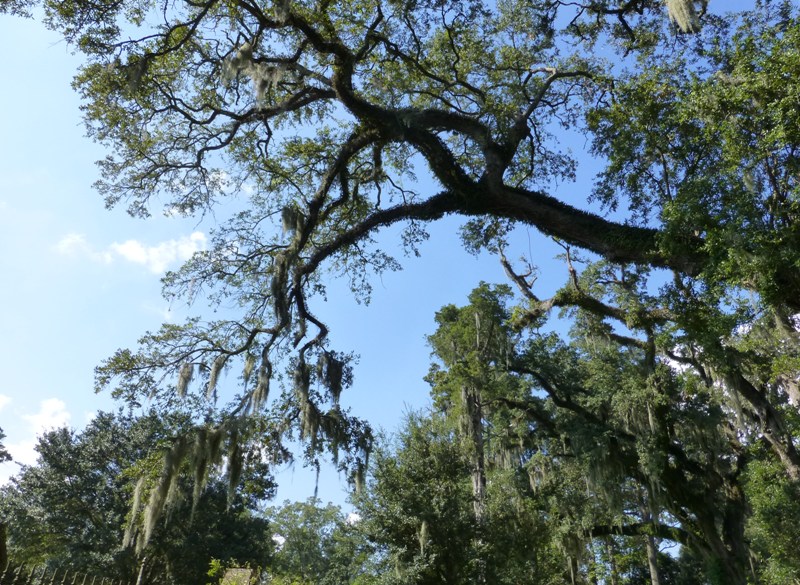


 )
)
